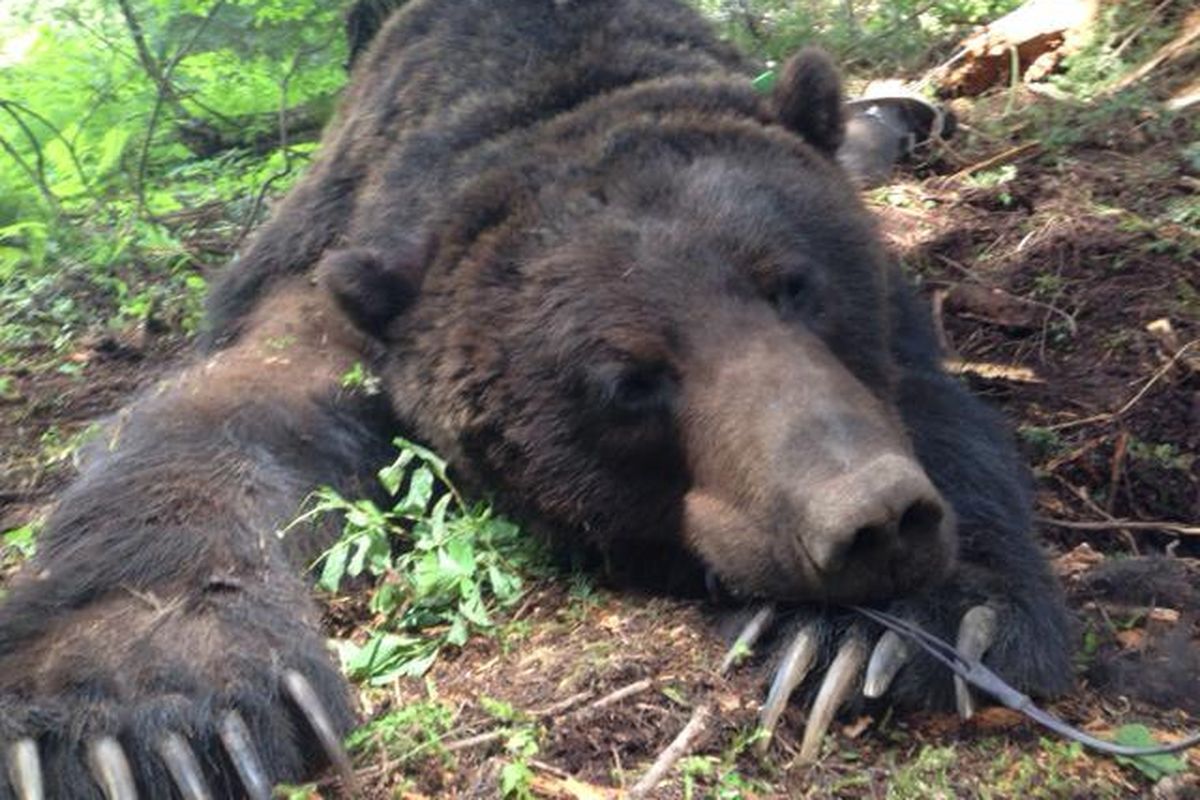Grizzlies tend to stay in the shadows of attention in the Inland Northwest

Few people would know that grizzly bear numbers are gradually increasing northeast of Spokane.
In southwestern Montana, an expanding population of grizzlies gained notoriety this fall for multiple attacks on humans, mostly hunters calling elk.
But the 80 or so grizzlies of northeastern Washington, North Idaho and northwestern Montana have not launched a serious attack on a human in this region in decades, according to Wayne Kasworm, U.S. Fish and Wildlife Service regional grizzly bear biologist based in Libby, Montana.
“The exception,” he said, “involves a hunter along the Idaho-Montana border in 2011 who mistook a grizzly bear for a black bear and shot it but only wounded the animal.”
The hunter and a companion were tracking the bear into thick cover when the wounded grizzly attacked the companion. The hunter killed the attacking bear, but in doing so also shot and killed his partner.
The area’s largest concentration of grizzlies is in Montana’s Cabinet Mountains-Yaak recovery zone, where about 50 grizzlies roam. Grizzlies have been brought in from other regions and released over the years through federal threatened-species programs, researchers say.
About 75 grizzlies are in the Selkirk Mountains of Idaho and British Columbia with 20-25 hanging out south of the border, said Kasworm, who oversees researchers. Teams of wildlife biologists are out all summer capturing and putting GPS collars on grizzlies or monitoring, he said.
Fewer than 10 grizzlies roam in northeastern Washington, but researchers got lucky this summer. On June 29, for the first time in more than 30 years, a grizzly bear was captured for radio-collaring and released.
The young male grizzly weighing about 365 pounds was captured by a multiagency team southeast of Sullivan Lake in Pend Oreille County.
The bear has traveled north and south of the capture site in a range of about 25 miles through September, coexisting with hikers and hunters who frequent the area.
Researchers monitor collared bears by satellite. Other bears are traced by trail camera images and hundreds of remote bait stations that collect hair for DNA analysis. More than 600 bait stations are in the Cabinet-Yaak area alone, Kasworm said.
“We get reports of bears,” he said. “Sometimes people report being bluff charged, but I’ve not heard of anything in this region in the category of an encounter that resulted in an injury.”
A Bozeman man drew national attention last weekend by releasing a video recording that showed him badly wounded and bleeding after being attacked twice by a sow grizzly with cubs in the Madison Range near Ennis. At least four attacks on hunters have occurred this season in southwestern Montana.
In the Inland Northwest, there are fewer elk, fewer bears and fewer hunters blowing elk cow calls that make them sound like bear prey.
Humans are more likely to be a threat to the bears in this region, statistics show. Several bears a year are killed in the Inland Northwest by cars, trains, poachers or hunters mistaking them for black bears, Kasworm said.
Grizzlies in this region are classified as a threatened species and are protected from hunting, but a young male grizzly was killed by a train on Aug. 27 south of the Kootenai National Wildlife Refuge near Bonners Ferry.
Priest Lake residents regularly see grizzlies in the lowlands as they emerge from dens in spring. And fall is another likely time for people in lowlands to see grizzlies.
As they forage to put on fat for winter denning, the bears can be lured to rural residences and cabins by fruit trees, garbage, pet food and bird seed, Kasworm said.
Montana wildlife staff captured a grizzly on Sept. 29 after it came into a rural yard and killed a pig. The bear was taken 25 miles away and released.
Grizzlies are euthanized only when they have displayed unusually threatening behavior or been involved in multiple conflicts, Kasworm said.
Researchers from states, tribes and federal agencies continue to study and monitor bears in this area. About four grizzlies are collared with active GPS units in the Idaho Selkirks this season, Kasworm said, noting more bears are collared with units that have stopped working.